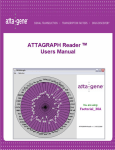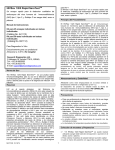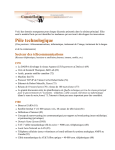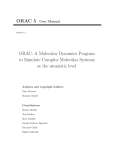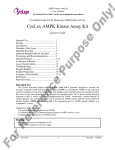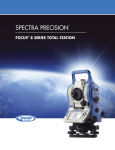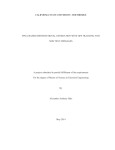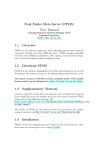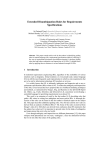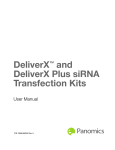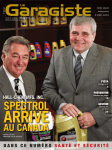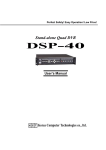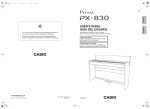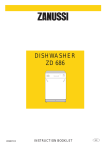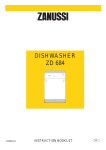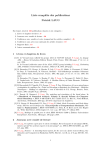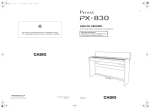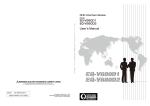Download Attagraph User Manual
Transcript
Factorial30TM Transcription Reporter System User Manual For Factorial30TM and Factorial30TM-XL Kits Ver. 01-2008 Table of Contents Introduction........................................................................................................... 3 Principle of the FACTORIAL™ Technology ....................................................... 4 FACTORIAL30™ Product Line ............................................................................ 6 FACTORIAL30™ Product Selection Guide.......................................................... 7 Ordering Information............................................................................................ 8 FACTORIAL30™ Operation Manual .................................................................... 10 FACTORIAL™ Assay Workflow........................................................................... 12 Overview of the FACTORIAL™ Assay ................................................................ 13 Experimental Protocol ......................................................................................... 15 I. Transfection of Cells with FACTORIAL™ Reagent ..................................... 15 II. Treatment of Cells ....................................................................................... 17 III. RNA Isolation ............................................................................................. 17 IV. DNase Treatment....................................................................................... 17 V. Reverse Transcription................................................................................ 19 VI. PCR Amplification ...................................................................................... 20 VII Labeling FACTORIAL™ DNA by Primer Extension ................................... 23 VIII. Digesting the Labeled FACTORIAL™ Primer Extension Product .............. 24 IX. Proteinase K Treatment ............................................................................. 24 X. Capillary Electrophoresis ........................................................................... 25 Frequently Asked Questions ............................................................................... 27 Troubleshooting Guide ........................................................................................ 28 Trademarks and Patent information.....................................................................30 End-user license agreement ………………………………………………………….30 Product Guarantee ……………………………………………………………………..30 Appendix A. Settings Used on the ABI 3130 XL Genetic Analyzer……………31 Appendix B. Promoter Elements and References ………………………………..32 . -2- Introduction Transcription factors (TFs) comprise classes of proteins that bind genomic regulatory elements and modulate gene transcription. Signals that control gene expression are often executed through coordinated changes in the activities of transcription factors. Analyzing the functional status of transcription factors is crucial to identifying signal transduction pathways that determine cell behavior. Of the few tools currently available to researchers who seek to study cell regulation at the level of transcription factor activities, none is geared towards quantitative high-content assessments. Assays that make use of reporter gene constructs (e.g., luciferase reporters) can be used to analyze only one or two transcription factors at a time. In contrast, DNAbinding assays can potentially be used to assess multiple transcription factors, but provide limited biological information because DNA binding is only one of many determining factors in the regulation of transcription factor activity. Attagene has conceptualized and developed a simple homogeneous assay1, termed FACTORIAL, that enables assessment of the activities of multiple transcription factors in a single experiment. Our own studies using this new technology have demonstrated consistent reproducibility and ease of application in different biological settings. The FACTORIAL™ assay is now being offered to a broad academic research community (please refer to enduser licensing agreement on page 30 of this Manual). With the FACTORIAL30™ assay, you can… • analyze basal and induced transcription factor activity profiles in a variety of commonly used cell lines; • assess the function of a gene of interest in the context of its effects on activities of multiple transcription factors; • investigate mechanisms of action of biologically active agents, including chemical compounds, peptides, siRNAs, and dominant-negative variants of proteins; • explore signal transduction pathways underlying alterations in gene expression profiles generated by microarray hybridization. 1. Romanov S, Medvedev A, Gambarian M, Poltoratskaya N, Moeser M, Medvedeva L, Gambarian M, Diatchenko L, Makarov S. Homogenous reporter system enables quantitative functional assessment of Multiple transcription factors. Nat. Methods. 2008 Mar; 5(3): 253-60. Epub 2008 Feb 24. -3- Principle of the FACTORIAL™ Technology The key to the FACTORIAL™ technology (Figure 1) is a library of uniformly constructed Reporter Transcription Units (RTUs). Each FACTORIAL™ RTU is made in a common plasmid backbone and contains a unique TF-inducible promoter region fused to a transcribed reporter sequence. When co-introduced into a cell of interest, the RTUs produce reporter RNAs in amounts commensurable with the activities of the corresponding TFs present in a cell. To provide equal detection opportunities for different transcription factors, all FACTORIAL™ RTUs are supplied with essentially identical reporter sequences. To distinguish reporter sequences produced by different RTUs, each sequence is provided with a short processing tag (restriction cleavage site), the position of which varies among the RTUs. Thus, reporter sequences can be discriminated upon cleavage with the corresponding processing enzyme. The cleaved reporter species are separated by high resolution capillary electrophoresis (CE) and quantified. The CE is performed by standard sequencing instrument that is run in Fragment Analysis mode. TFA Library of Reporter Constructs (RTUs) HpaI cleavage sites TFB Transcription RT-PCR amplification Labeling and Digest with HpaI TFA Separation and detection TFB + Figure 1. A key feature of the FACTORIAL™ technology is that all steps of the detection protocol are performed using a homogeneous set of reagents in single reaction tube format, providing highly uniform conditions for detecting multiple transcription factors. -4- Currently, our FACTORIALTM library comprises 30 individual TF-responsive cis-regulatory RTUs. The promoter region of a typical RTU contains single or tandem repeats of a cisregulatory element that is specific for a particular TF or family of TFs sharing the same DNAbinding specificity. Response elements are positioned upstream of a minimal, TATA-like promoter that is common for all the TF-responsive cis-RTUs. Transcription factors that can be evaluated using the FACTORIAL30™ system are listed in Appendix B. Many of these transcription factors represent signaling pathways with well-established biological roles, controlling cell proliferation, stress responses, inflammation, drug metabolism, and differentiation. Each individual FACTORIAL30™ RTU was functionally validated. We performed a number of transient reporter assays in which we assessed the RTUs’ responsiveness to model stimuli (e.g., Il-1β and TGFβ were used to evaluate the responsiveness of NF-κB and TGFβ RTUs, respectively). Additionally, the performance of each cis-RTU was tested by co-transfection with expression vectors encoding corresponding transcription factors. Inducibility of the FACTORIAL™ RTUs was assessed by quantitative RT-PCR and compared to that produced by conventional luciferase- or phosphatase-based reporter gene constructs. We found that RNA-based detection provided better responsiveness than conventional enzymatic-based assays. -5- FACTORIAL30TM Product Line All our current products feature the FACTORIAL30TM TF profiling library. Table 1 lists the TFs and cis-regulatory elements that can be evaluated using the FACTORIAL30™ library. Table 1. FACTORIAL30™ cis-regulatory elements AhrE FOXO OCT AP-1 GATA p53 AP-2 GRE PAX6 BRE HIF1a PPRE CRE HSE SOX9 C/EBP ISRE SP1 RARE Myb SREBP ERE NF-kB TCF/b-cat ETS NRF1 TGFbRE FOXA ARE XBP1 For more information on each TF, please see Appendix B. We offer a number of FACTORIAL30TM products, listed in the section below. -6- FACTORIAL30TM Product Selection Guide Since activities of individual TFs may vary substantially in different cell types, we provide six different configurations (or versions) of the FACTORIAL30™ library, each assigned a set of particular cell types. The table below will help you to determine which FACTORIAL30™ configuration will best suit the cell line of your choice. If you do not see the name of your cell line in the table, we recommend the FACTORIAL30™ Explorer Kit, which contains trial samples of all six FACTORIAL30™ configurations. All configurations contain the same set of cis-regulatory elements but differ in the amount of individual reporters. To accommodate researchers with specific needs, we can also create a unique, custommade FACTORIAL30™ configuration that will be specific for your cells of interest. Please contact us for more information and pricing on custom-made FACTORIAL™ libraries. Table 2. Cell types compatible with each FACTORIAL30™ configuration FACTORIAL30™ configuration Cell types tested FACTORIAL30™ A FACTORIAL30™ C NIH 3T3, CHO-K1, U87MG, HCT116, COS-7, ZR-75-1, SH-Sy5y 3T3 L1, C3H/10T 1/2, MDCK, MCF-7, C2C12, K 562, RAW264.7, INS-1 HeLa FACTORIAL30™ D Caco-2, HepG2, SW480, VERO FACTORIAL30™ E NHDF FACTORIAL30™ F HEK 293 FACTORIAL30™ B -7- Ordering Information Table 3. FACTORIAL30™ kit names and catalog numbers Kit name FACTORIAL™ 30.A FACTORIAL™ 30.B FACTORIAL™ 30.C FACTORIAL™ 30.D FACTORIAL™ 30.E FACTORIAL™ 30.F FACTORIAL™ 30.Explorer FACTORIAL™ 30.A-XL FACTORIAL™ 30.B-XL FACTORIAL™ 30.C-XL FACTORIAL™ 30.D-XL FACTORIAL™ 30.E-XL FACTORIAL™ 30.F-XL FACTORIAL™ 30.XL.Explorer Catalog number FPS 03020A FPS 03020B FPS 03020C FPS 03020D FPS 03020E FPS 03020F FPS 03020 Explorer FPS 03020A-XL FPS 03020B-XL FPS 03020C-XL FPS 03020D-XL FPS 03020E-XL FPS 03020F-XL FPS 03020-XL Explorer FACTORIAL30TM TF Profiling Systems Each FACTORIAL30™ TF profiling system is supplied with one particular configuration of the FACTORIAL30™ Reporter Library. The package also includes a set of essential FACTORIAL™-specific reagents: RT and PCR primers, labeling primer, Hpa I, Proteinase K solution, CE calibration reagent and CE capillary molecular weight standards. Each system is sufficient to perform 20 TF profiling reactions. FACTORIAL30XLTM TF Profiling Systems These packages contain all the components of the corresponding FACTORIAL30™ system, but they also include additional reagents that are required for performing the detection steps of the assay, including DNase I enzyme, RT and PCR enzymes with corresponding reaction buffers, and dNTPs. Alternatively, these additional reagents can be obtained from other suppliers. Both FACTORIAL30TM and FACTORIAL30XLTM TF profiling systems are also available in the Explorer format, which includes aliquots of all six configurations of the FACTORIAL30™ reporter library. ATTAGRAPH Reader™ Software ATTAGRAPH Reader™ Software is required for analysis of data generated using the FACTORIAL30™ system and is available for our customers thru Attagene's website at www.attagene.com. -8- How to order Orders to be shipped within the United States can be placed 24 hours a day by fax or e-mail. Customer Service Representatives are available between 9:00 am and 5:00 pm Eastern Time, Monday through Friday, to take your order. In most cases, orders are shipped the same day. No minimum order quantity is required. To place an order: Telephone: Fax: E-mail: Online: Mail: Toll-free 1-888-721-2121 or (919)313-0473 (919)313-0172 [email protected] http://www.attagene.com ATTAGENE PO Box 12054 RTP, NC 27709, USA -9- FACTORIAL 30™ OPERATION MANUAL Please read the entire manual before beginning your experiment. Materials and Equipment Required FACTORIAL30™ Kit Components (Cat. numbers FPS 03020A, 03020B, 03020C, 03020D, 03020E, 03020F, 03020Explorer) FACTORIAL30™- XL Kit Components (Cat. numbers FPS 03020A-XL, 03020B-XL, 03020C-XL, 03020D-XL, 03020E-XL, 03020F-XL, 03020-XL Explorer) Reagents provided in each kit are sufficient to perform 20 FACTORIAL™ assays (which corresponds to 20 transfections using 6-well plate format). Table 4. Reagents provided in the FACTORIAL30™ kits # 1 2 3 4 5 6 7 8 9 10 11 12 13 14 15 16 17 18 FACTORIAL30™ Reagent name FACTORIAL30™ FACTORIAL30™-XL Explorer FACTORIAL™ Reporter Library (1 µg/µl) Primer for reverse transcription (RT-primer) (0.5 µg/µl) FACTORIALTM-specific PCR Primer MIX (20 pM/µl each) FACTORIALTM-specific Labeling Primer (20 pM/µl) Hpa I restriction enzyme Proteinase K solution FACTORIAL™ Calibration Standards Capillary Electrophoresis Standards RNAse-free DNase I 10X DNase buffer 50 mM EDTA dNTP Mix (10mM of each dATP, dCTP, dGTP, and dTTP) 50 mM MgCl2 10X First-strand RT buffer M-MLV reverse transcriptase (200 units/µl) 10X PCR buffer Taq DNA Polymerase RNase-free water 25 µl 45 µl 90 µl 25 µl 25 µl 5 µl 12 µl 18 µl - 10 µl (each) 45 µl 90 µl 25 µl 25 µl 5 µl 12 µl 18 µl - 25 µl 45 µl 90 µl 25 µl 25 µl 5 µl 12 µl 18 µl 90 µl 180 µl 90 µl 90 µl 20 µl 90 µl 45 µl 250 µl 25 µl 3 ml Additional Reagents Required (not supplied by ATTAGENE) Transfection reagent RNA isolation reagents DNA Mass Ladder (such as Low DNA Mass Ladder, Invitrogen, cat. # 10068-013) Performa DTR gel filtration cartridges (Edge Biosystems, cat. # 42453) or Qiagen PCR Purification Kit, cat. # 28104) Formamide Hi Di (Applied Biosystems, cat. # 4311320) - 10 - Instruments required Thermocycler Bench centrifuge Capillary electrophoresis instrument (ABI sequencer/Fragment Analyzer)* ATTAGRAPH™ software - available from www.attagene.com *ABI sequencers/Fragment Analyzers are usually available from DNA sequencing facility. If you do not have the instrument available you can submit and send your processed samples to us. See detailed instructions on page 26. - 11 - FACTORIAL™ Assay Workflow FACTORIAL™ Assay Step Estimated Time Transfect cells to be evaluated with FACTORIAL™ Reporter Library 24 hrs Treat transfected cells as desired Variable Isolate total RNA or mRNA 30 minutes Treat RNA with DNase I 1 hour Reverse transcribe RNA into cDNA 2 hours Amplify FACTORIAL™ cDNA by PCR 2 hours Label PCR product by primer extension 15 minutes Digest labeled DNA with Hpa I 2-4 hours Purify digested FACTORIAL™ DNA 1.5 hours Run capillary electrophoresis 1.5 hours Analyze data using ATTAGRAPH™ Software Variable - 12 - Overview of the FACTORIAL™ Assay The FACTORIAL™ assay workflow is illustrated on page 12. Here we briefly describe each step of the assay. For complete details about each step of the FACTORIAL™ detection protocol, please see the corresponding parts of this manual. I. Plating of cells and introduction of the FACTORIAL™ Reporter Library into cells. We have successfully performed the FACTORIAL™ assay with a variety of different cell types. Both primary cells and stable cell lines can be used. The plating format depends on your choice of cells, transfectability of the cells, and desired experimental throughput. Highly transfectable cells (> 50% of transfection efficacy) can be reliably assayed in a 96-well format. For most stable cell lines, we use a 12-well format. Using cells that are healthy and plating them at a consistent density are important factors that dramatically improve the reproducibility of the FACTORIAL™ assay. The FACTORIAL™ Reporter Library is usually introduced into cells via a transient transfection protocol. Your choice of transfection technique depends on your choice of cell type. A variety of available transfection reagents, as well as electroporation, can be used. It is important that the efficacy of transfection is sufficient to produce at least 10,000 transfected cells per tissue culture sample. This ensures efficient and reproducible detection of the FACTORIAL™ Reporter RNAs. II. Treatment of cells. Starting the next day after transfection, the cells can be treated according to your experimental design. For example, cells can be exposed to a variety of chemical or biological compounds for different intervals of time. We usually allow for three replicas for each treatment condition, and we always include appropriate positive and negative controls. III. Isolation of total RNA. Following the experimental treatment, total RNA is extracted from the cells. To this end, commercially available column-based RNA purification systems can be used. Depending on the throughput of your assay, other RNA isolation methods (i.e., Trizol™-based extraction) can also be used. RNA samples can be stored frozen at –70˚C. IV. Treatment with DNase I. This step is required to remove all traces of FACTORIAL™ plasmid DNA from the RNA samples. The treatment should be sufficient to prevent any significant PCR amplification in "no RT" control samples. RNA samples treated with DNase I can be stored frozen at –70˚C. V. Reverse transcription. The DNase-treated RNA samples are reverse transcribed to produce the FACTORIAL™ Reporter cDNAs. This step is performed using standard reverse transcription reagents. FACTORIAL™ cDNA samples can be stored frozen at –70˚C. VI. PCR. To amplify the FACTORIAL™ Reporter cDNAs, this step is performed using FACTORIAL™-specific primers. The PCR reactions are carried out using a standard thermocycler. The minimal required number of PCR cycles may vary depending on your cell type and tissue culture format. FACTORIAL™ PCR samples can be stored frozen at –20˚C. - 13 - VII. Labeling. This step allows detection of the FACTORIAL™ Reporter cDNAs during capillary electrophoresis. Labeling is performed via a primer extension reaction using FACTORIAL™-specific primers coupled with a fluorescent dye (such as 6-FAM). VIII. Processing. This step allows separation of the individual FACTORIAL™ Reporter cDNAs during capillary electrophoresis. Processing is achieved by digestion of the labeled cDNA with Hpa I restriction endonuclease. IX. Purification. This step provides optimal conditions for capillary electrophoresis that is sensitive to certain impurities present in the samples (such as salt and proteins). Sufficient purification is achieved by treatment of the samples with proteinase K following desalting using gel filtration spin columns. X. Capillary electrophoresis. This step is required to detect and quantify individual FACTORIAL™ Reporter cDNAs. Electrophoresis is usually performed in a DNA sequencing facility using standard ABI capillary electrophoresis instrument (i.e. ABI 3100 or ABI 3130). Please consult your Institution's Sequencing Facility to determine if they perform fragment analysis service. Alternatively, labeled samples can be submitted for analysis to one of the designated sequencing facilities (see the corresponding section of this manual). On the electrophoregramm, the individual FACTORIAL™ Reporter cDNAs are identifiable as peaks of fluorescence migrating according to the position of the processing tag in the corresponding FACTORIAL™ RTUs. XI. Data analysis and storage. To extract the transcription factor activity profile, the raw data acquired during capillary electrophoresis have to be analyzed using the provided ATTAGRAPH™ Reader Software (available on our website at www.attagene.com). - 14 - Experimental Protocol I. Transfection of cells with FACTORIAL™ Reagent The first step of the FACTORIAL™ analysis requires introducing the FACTORIAL™ Reagent into tissue culture cells. We suggest that you repeat each control and experimental condition at least three times to verify the reproducibility of the experiment. If an additional plasmid (e.g., an empty vector or a vector containing your gene of interest) is to be co-transfected with the FACTORIAL™ Reagent, we suggest at least a 1:10 µg ratio of vector to FACTORIAL™ Reagent. For example, do not combine more than 0.1 µg of the vector with 1 µg (1 µl) of the FACTORIAL™ Reagent. The FACTORIAL™ assay utilizes a standard transfection protocol for introducing the plasmid DNA into tissue culture cells. We recommend that the transfection protocol produce >5% transfection efficiency of the FACTORIAL™ reagent into the cells being treated. General transfection considerations apply to this procedure: cells should be healthy, proliferating well, and plated at a consistent density to minimize variance in transfection efficiency and transcription profile. Different transfection reagents produce different results with various cell lines. A set of reagents and methods should be used that have been proven to be effective for transfecting plasmid DNA into the desired tissue culture cell line. These transfection reagents and methods should be optimized to achieve the highest percentage of transfected cells while maintaining good cell viability. We recommend that you follow the manufacturer’s suggestions for optimization of your transfection. To determine the percentage of cells transfected with a specific transfection protocol, we suggest using a reporter plasmid containing β-gal, eGFP, or another reporter to assess the percentage of transfection. After transfection, cell viability should be assessed via a method of your choice. Depending on transfection efficiencies, between 2 x 104 and 3 x 105 cells are plated for transfection. Please consult Table 2 for general guidelines regarding the transfection protocol. As a general rule, 10,000 transfected cells are needed for each replicate in the analysis. - 15 - Table 5. Recommended number of cells to plate for transfection % transfected cells 5 10 20 30 40 50 70 90 # of cells for transfection protocol 300,000 200,000 150,000 100,000 80,000 60,000 40,000 20,000 Plate format for transfection 6-well dish 6-well dish 6-well dish 12-well dish 12-well dish 24-well dish 24-well dish 48-well dish Amount of FACTORIAL™ reagent used 1 µg 1 µg 1 µg 0.5 µg 0.5 µg 0.25 µg 0.25µg 0.1 µg Note: Depending on the tissue culture cells used, you may wish to change the plate format suggested. FACTORIAL™ detection has been successfully completed in the following cells using the FuGene-6™ (Roche) transfection protocol (outlined below): C3H/10T1/2, U-87 MG, NIH-3T3, COS-7, HepG2, INS-1, NHDF, HEK 293tk, Raw264.7, K562, HeLa, MCF-7, SW480, HCT116, SH-SY5Y, ZR-75-1, CHO-K1, 3T3 L1, MDCK, C2C12, Caco-2, VERO. FuGene-6™ (Roche) Transfection Protocol: 1. Plate healthy cells no more than 24 hours prior to transfection. 2. Add 3 µl of FuGene™ to 97 µl of Optimem, being sure to avoid touching the pipet tip to the side of the tube because the FuGene™ will stick to plastic. 3. Incubate for 5 minutes at room temperature. 4. Add 1 µl of FACTORIAL™ Reagent and co-transfected plasmid (if applicable) to 50 µl of Optimem and mix well by tapping tube. 5. Mix the FuGene/Optimem and DNA/Optimem into a single tube and incubate at room temperature for 15 minutes. 6. Remove media from cells and replace with 900 µl of fresh media in each dish. 7. Add Optimem /DNA/ FuGene mixture to cells. 8. Incubate overnight at 37oC. 9. Remove the media the next day, rinse once with fresh media, and put fresh media on the cells. 10. Treat cells according to your experimental design Other transfection protocols that have been successfully used with the FACTORIAL™ analysis include Qiagen’s SuperFect™, Invitrogen’s Lipofectamine 2000™, Qbiogene’s jetPEI™, and electroporation. - 16 - II. Treatment of Cells With the FACTORIAL™ system, time points may need to be taken sooner than in other assays because the method of detection is at the level of RNA rather than protein. Because there are myriad potential experimental treatments, we suggest that you use the compounds, concentration, and treatment times that you deem appropriate for the treatment and cell types to be utilized. III. RNA Isolation After transfecting your tissue culture cells with the FACTORIAL™ Reagent and treating them as desired, you will need to isolate RNA to assess the level of transcriptional activity within the cell, as identified by the FACTORIAL™ Reporters. Note: Be sure to use RNase-free tips, tubes, and solutions for this section of the protocol. Gloves should be worn at all times to minimize RNase contamination. The best method for RNA isolation depends upon the scale of the RNA isolation and your personal preferences. Multiple column-based RNA isolation technologies used according to the manufacturers’ specifications have proven compatible with the FACTORIAL™ system. Alternative methods of RNA isolation have also been used with good results. The most important aspect of the isolation procedure is to purify intact RNA that is suitable for a reverse transcription reaction. It will be necessary to isolate at least 0.5 µg of total RNA from the transfected cells in a final volume of no more than 80 µl. The total amount of RNA needed will depend on the transfection efficiency of the cells—the lower the transfection efficiency of the cells, the greater the amount of RNA will be needed to obtain a reproducible FACTORIAL™ analysis. Once isolated, the RNA should be analyzed using a spectrophotometer to assess the purity and amount of RNA recovered. By taking absorbance readings at 260 nm and 280 nm, the purity of the RNA can be evaluated. The 260/280 ratio should be ~2.0. A ratio less than ~1.75 or greater than 2.0 suggests that there may be contaminants present. The RNA from this step may be stored at –80oC until you are ready to proceed. IV. DNase Treatment If your RNA isolation protocol included an on-column DNase I treatment step, you can skip this step and proceed directly to Section V. RNA isolated from the transfected and treated cells must be digested with DNase I to remove any residual FACTORIAL™ Reagent that may have contaminated the sample. It is necessary to remove as much of the transfected FACTORIAL™ reagent as possible from the RNA sample to ensure that the plasmid DNA does not interfere with the subsequent analysis. - 17 - Notes: • Be sure to use RNase-free tips, tubes, and solutions for this section of the protocol. Gloves should be worn at all times to minimize RNase contamination. • The amount of RNA used for each sample should fall within the suggested range indicated in the reverse transcription protocol (0.5 to 5 µg). It is not necessary to adjust your samples to contain equal amounts of RNA for each RT reaction. The results will be internally normalized during the data analysis procedure by reporting relative levels instead of absolute levels of expression. • If your cells have not been efficiently transfected with the FACTORIAL™ Reagent, you should use more RNA for the DNase I treatment than you would if your cells had a high transfection efficiency. • This protocol has been optimized for DNase I provided with the FACTORIAL™ kit, but other DNases have been tested and can be used with little or no modification of this protocol (follow manufacturer’s instructions in this case). Protocol: Note: Amounts in the following protocol are given per single reaction. We advise preparing a Master Mix for all the samples plus one extra reaction. 1. Assemble the following reaction: 0.5 to 5 µg of each RNA sample from Section III Adjust the volume to 17 µl using RNase-free water 2 µl 10X DNase buffer 2 µl DNase Final reaction volume = 20 µl 2. Incubate for 30 minutes at 37oC. 3. Inactivate DNase I by adding 2 µl of 50 mM EDTA and heating the tubes at 75oC for 15 minu-tes. Note: If EDTA is not added after the DNase I treatment, the RNA may be chemically degraded in future steps. 4. Optional Step. To assess the degradation of the RNA, run a sample (about 1 µg) from the DNase I treatment on a 1X TAE or 1X TBE gel of 1% agarose + 0.5 µg/ml EtBr. It is not necessary to run a formaldehyde gel for this analysis. After running the gel, the 18s and 28s ribosomal RNA bands should be sharp, and the 28s band should be twice as - 18 - intense as the 18s band. Alternatively, integrity of your RNA samples can be assessed on bioanalyzer. RNA is subject to degradation by both enzymatic and chemical processes, so extreme care should be taken when isolating, storing, or using RNA. The RNA from this step may be stored at –80oC until you are ready to proceed. V. Reverse Transcription The DNase-treated RNA is now ready to be reverse-transcribed into cDNA, which will then be amplified via PCR. General notes: • Be sure to use RNase-free tips, tubes, and solutions for this section of the protocol. Gloves should be worn at all times to minimize RNase contamination. • Two reactions (+ RT and a – RT control) should be assembled for each RNA sample isolated in Section III. The – RT negative control reaction is recommended for proper identification of the correct size PCR product in + RT reaction (see below). Protocol: Note: Amounts in the following protocol are given per single reaction. We advise preparing a Master Mix for all the samples plus one extra reaction. 1. Assemble the following RT-primer annealing reaction: 9 µl of the RNA from Section IV 3 µl RNase-free water 1 µl dNTPs (10 mM each) 1 µl RT-Primer (0.5 µg/µl) Final reaction volume = 14 µl 2. Incubate at 70oC for 3 minutes, then cool the reaction at room temperature for 5 minutes. (This step can be performed in a thermocycler.) 3. Add the following components to each of your annealing reactions: 2 µl 10X RT Buffer 0.4 µl MgCl2 (50 mM) 2.6 µl RNase-free water 1 µl M-MuLV Reverse Transcriptase (200 units/µl) - 19 - Final reaction volume = 20 µl per reaction Note: Extra Mg2+ is added to compensate for excess of EDTA. 4. Incubate for 1.5 hours at 37oC, then for 15 minutes at 70oC. Reminder: A negative control reaction (– RT) for each RNA sample should be assembled with the same reagents as the + RT reaction, except there is no reverse transcription enzyme present. Both reactions should be incubated identically. The RT products can be stored at –20oC until you are ready to proceed. VI. PCR Amplification After reverse transcription, the FACTORIAL™ cDNA must be amplified by PCR. Notes: • We recommend that you reserve one set of pipettes for PCR set-up purposes only and perform the PCR set-up in a specially designated area to avoid carry-over problems. • Since PCR can amplify small amounts of DNA, take care to limit the amount of contamination of the PCR reaction. Use aerosol tips and gloves when assembling the PCR reaction. • Due to the sensitivity of the technology to the PCR amplification step, it may be necessary to optimize the PCR conditions for your specific PCR machine. Please see the Troubleshooting Guide if this is required. • Use as templates both the + Reverse Transcription (+RT) and the – Reverse Transcription (– RT) negative control from Section V. Protocol: Note: Amounts in the following protocol are given per single reaction. We advise preparing a Master Mix for all the samples plus one extra reaction. 1. Assemble PCR reactions at room temperature: 18.25 µl water 2.5 µl 10X PCR buffer 0.5 µl dNTP mix 1.0 µl FACTORIALTM-specific PCR Primer Mix 0.25 µl Taq DNA Polymerase - 20 - 2. In thin-walled tubes that fit your thermal cycler, add 22.5 µl of the Master Mix to 2.5 µl of reverse transcription reaction (either + RT or – RT from Section V). The final reaction volume in each tube should be 25 µl. Note: To test if your PCR reagents have become contaminated with FACTORIAL™ DNA, assemble at least one PCR reaction with just water as a template. 3. Perform PCR using the conditions outlined as follows: PCR conditions: Please note that the denaturation temperature used for the FACTORIAL™ Assay PCR is 95oC instead of the more commonly used 94oC. PCR Cycles* 94oC 95oC 3 min 20secs o 68 C 20 secs 72oC 72oC 70 secs 5 mins 4oC 8 *The number of cycles used for the PCR depends on your particular experimental conditions. We recommend using no more than 32 cycles to start the optimization procedure. 4. To assess the PCR products, run a 1X TAE or 1X TBE gel with 1% agarose + 0.5 µg/ml EtBr. Load 5 µl each of the + RT and – RT samples in separate lanes on the gel. Load 5 µl of the DNA Mass Ladder alongside the samples to estimate the size and amount of DNA obtained from the PCR reactions. Expected results: • The PCR products in + RT reactions should be 680 bp in length. • Although the – RT samples should theoretically generate no bands, some PCR product is occasionally detected. DNA detected in the – RT sample will have product size different from that of +RT-PCR product (see Figure 2) • Figure 3 shows an example of the acceptable amount range of PCR products that can be used for the labeling reaction. Here, 5 µl of the DNA Mass Ladder and 5 µl of the PCR product were loaded on an agarose gel: - 21 - Figure 2. Electrophoretic analysis of PCR products on 1% agarose gel. LANE 1 2 3 4 5 6 7 8 9 250 ng 100 ng 830bp. (-RT) 680bp. (+RT) Lane 1. Lane 2. Lane 3. Lane 4. Lane 5. Lane 6. Lane 7. Lane 8. Lane 9. 5 µl of DNA Mass Ladder (Invitrogen, cat.# 10068-013) Acceptable amount of PCR product Acceptable amount of PCR product Acceptable amount of PCR product Too little PCR product Too little PCR product Too little PCR product Product of –RT reaction 100 bp DNA Ladder • If no PCR product is visible in the + RT sample, see the Troubleshooting guide for suggestions on how to proceed. • The intensity of the + RT PCR product band should be similar or exceeding the intensity of the 100 ng DNA Mass Ladder band that have been highlighted by the red arrow above. If there is less than 100 ng of PCR product, the PCR should be repeated and a new gel should be run. If the problem of not enough DNA persists, see the Troubleshooting guide for further action. The PCR products can be stored at –20oC until you are ready to proceed. - 22 - VII. Labeling FACTORIAL™ DNA by Primer Extension After sufficient FACTORIAL™-specific PCR product is available, it may be labeled via a primer extension reaction. This labeling allows detection and quantification of the FACTORIAL™ reporter cDNA by using the capillary electrophoresis conditions described in Section X. Notes: • Use aerosol tips and gloves during the assembly of the primer extension reaction. • The conjugated fluorophore is sensitive to light, so attempt to minimize the time that the oligonucleotide and primer extension products are exposed to light. • We suggest using a thermocycler for the labeling reaction. Protocol: Important: If the amount of the PCR product from the previous step is between 100 and 250 ng, use 1/10 of that for labeling; if the amount exceeds 250 ng, use 1/20 of that PCR product for labeling. Note: Amounts in the following protocol are given per single reaction. We advise preparing a Master Mix for all the samples plus one extra reaction. 1. Assemble labeling reaction: 19.25 µl water 2.5 µl 10X PCR buffer 0.5 µl dNTPs (10mM of each dNTP) 0.5 µl FACTORIALTM-specific Labeling Primer 0.25 µl PCR enzyme 3. In thin-walled tubes that fit your thermal cycler, add 22.5 µl of the Master Mix to 2.5 microliters of the PCR reaction from Section VI (125 to 50 ng of PCR product). The final reaction volume in each tube should be 25 µl. 4. In a thermal cycler, run the following primer extension reaction: 94oC for 3 minutes 95oC for 20 seconds 68oC for 20 seconds 72oC for 6 minutes You may store the labeled FACTORIAL™ primer extension product at –20oC, away from light, until you are ready to proceed. - 23 - VIII. Digesting the Labeled FACTORIAL™ Primer Extension Product After the FACTORIAL™ reporter cDNAs have been labeled, they should be digested. The digesting step will allow the capillary electrophoresis to resolve the reporter cDNAs produced by each specific FACTORIAL™ reporter. Note: The primer extension product has been labeled with a light-sensitive fluorophore and should be kept from being exposed to light as much as possible. Protocol: 1. Add 1 µl of Hpa I restriction enzyme directly to the 25 µl labeling reaction from Section VII. 2. Mix the samples and centrifuge to collect all of the liquid into the bottom of the tube. 3. Incubate for 2–4 hours at 37oC in the dark and proceed immediately to the next step (Section IX). IX. Proteinase K Treatment The labeled FACTORIAL™ samples must be purified prior to capillary electrophoresis. The proteinase K treatment step removes the impurities in the reaction that might clog the capillary electrophoresis machine. Purification also removes salts that can interfere with the correct operation of the capillary electrophoresis machine. Note: The primer extension product has been labeled with a light-sensitive fluorophore, so take care to shield the DNA from light. Protocol: 1. Dilute the provided Proteinase K solution 1:30 in water. 2. Add 1 µl of the diluted solution to the 26 µl processed primer extension reaction from Section VIII. 3. Incubate at 37oC for 1 hour in the dark. 4. Use Performa DTR gel filtration cartridges (Edge Biosystems, cat. # 42453) or PCR Purification columns (Qiagen, cat. # 28104) to remove proteins and salts. You may store the purified, labeled PCR product at –20oC in the dark until you are ready to proceed. - 24 - X. Capillary Electrophoresis Capillary electrophoresis separates and detects the amount of transcripts generated by the FACTORIAL™ Transcription Factor Reporter constructs. Notes: • Capillary electrophoresis (CE) utilizes an ABI sequencer (3130xl or similar) and is usually performed in a sequencing facility. Please be advised that the data from other types of CE analyzers cannot be analyzed using our software. If you are using a sequencing facility to analyze your DNA fragments, please consult them regarding the best way to have your samples processed. We recommend bringing this booklet to them and calling their attention to Appendix A. • Ensure that the size standards supplied with this kit are the only molecular weight standards included in your sample. If other standards are used, it will not be possible to analyze the resulting data. If two or more standards are mixed with your sample, the analysis cannot be completed. • To obtain good capillary electrophoresis runs, the manufacturer’s protocol for fragment analysis should be completed. The fragments will range from about 90 nucleotides to 700 nucleotides in length. See Appendix A for settings for an ABI 3130xl Genetic Analyzer machine. • Every time an analysis is run, it is necessary to include four samples with calibration standards. These standards, supplied with the FACTORIAL™ kit, allow the ATTAGRAPH™ Software to correctly interpret the data generated by the sequencing machine. These standards should be treated as your other samples are treated for electrophoresis after Section IX. Sample electrophoresis protocol for ABI sequencers: 1. Immediately before loading samples onto the sequencer, combine the following: Per each sample take 9 µl of formamide + 0.18 µl CE standards (provided in the kit). Prepare Master Mix for all the samples to be analyzed plus one extra. In 96-well plate for CE analysis, combine 9 µl of Master mix with 1 µl of purified labeled FACTORIAL™ cDNA (Step IX). 2. The ABI capillary electrophoresis machine will produce a .fsa file that is ready for analysis using the ATTAGRAPH™ Software. Optional service note: If you do not have an access to Genetic Analyzer and would like to use our services, you can submit your samples for CE analysis and ship them to us according to the following instructions. - 25 - Sample preparation and shipping instructions: • Your samples should be fully processed and purified by recommended gel filtration or PCR purification columns. For PCR purification columns from other manufacturers we suggest that you check column specifications and make sure that your smallest DNA fragment (109 b) will be fully recovered after purification. • Please submit at least 5-µl aliquots of your samples for CE analysis. Place aliquots in polypropylene PCR strips preferably with attached flat caps or you may choose to use PCR plates of suitable format (24-, 48- or 96-well). Close tubes tightly or seal the plate with aluminum foil cover. Label tubes with numbers on top and the side. Each of your samples will be assigned the number with which you label it. For samples on PCR plates, each sample will be labeled according to well position (A1, for example). • Wrap the tubes or plate in foil to shield from light. • Fill out the CE request form (download from our web site) and email it to us at [email protected]; also include the hard copy with the package. • Ship samples on blue ice by overnight delivery to: Attagene, Inc., 7030 Kit Creek Rd., Morrisville, NC 27560. Please refer to ATTAGRAPHTM Software Manual for further analysis of FACTORIALTM data. - 26 - Frequently Asked Questions (FAQ) Q: What is the advantage of using FACTORIAL system over other TF profiling methods currently available? A: Currently there are 2 types of assays of this kind available: 1. DNA-binding assays, which allow measurement of a transcription factor's DNA-binding activity, but not its true activity; 2. Reporter gene types of assays, which allow measurement of TF activity but do not afford high-content screening. The FACTORIAL™ assay is a high-content assay that allows you to measure true TF activity as opposed to DNA-binding activity alone. Q: How many TFs can be studied simultaneously using FACTORIAL™ assay? A: Attagene’s FACTORIAL30™ Kit allows you to analyze the activity of 30 transcription factors in one homogenous assay. Q: What types of cells are suitable for the FACTORIAL™ assay? A: To be able to use the FACTORIAL™ assay with your cells of interest, you must first make sure that your cells are transfectable. You'll also need to optimize the transfection efficiency so that you have at least 10,000 cells transfected with the FACTORIAL reagent. Q: How can I determine which FACTORIAL™ version will give the best profile with my cell line? A: At present, there are 6 FACTORIAL™ versions available for researchers, and those 6 versions were tested in 23 cell lines. Please refer to Table 2 to see if your cell line of interest has already been tested by Attagene. If your cell line is not listed in that table, we offer the Explorer version of the FACTORIAL™ kit. The Explorer Kit contains trial amounts of all 6 FACTORIAL™ versions so that you can determine which version works best in your cells. If none of the current versions produces a satisfactory profile in your cells, we can customize a FACTORIAL™ version for your cells of interest. For more information and pricing, please contact Attagene’s Technical Support by phone at 1-888-721-2121 or by email at [email protected]. Q: What if our sequence facility does not provide CE analysis service? A: You may submit and send your samples to Attagene’s service facility. Please follow the instructions on sample preparation and shipping listed in Section X. Your samples will be analyzed and results will be sent to you via e-mail. - 27 - Troubleshooting Guide Problem #1: Insufficient or no PCR product detected from the reverse transcription reaction. Cause: The transfection was unsuccessful. Solution: Make sure that your cells are maintained under the best conditions, and that they look healthy before and after transfection. If cells show poor viability after transfection, then your current transfection protocol may be incompatible with the cells. Make sure that you have optimized your transfection conditions so that cell viability is not affected, and that you have a sufficient number of transfected cells to work with (at least 10,000 cells per sample). We strongly recommend that you include a transfection control, such as a reporter plasmid containing β-gal or eGFP, to assess the percentage of transfected cells. Cause: The RNA was degraded either during the RNA isolation step, the DNase procedure, or the reverse transcription reaction. Solution: Take an aliquot of the DNase-treated RNA and run it on a 1% agarose gel. If the 18s and 28s RNA bands are intact and do not appear smeared on the gel, then the RNA is intact and the RT or PCR step was not completed properly. Repeat the experiment from the transfection step forward, taking care to minimize RNase activity in your sample. Cause: The reverse transcription reaction was unsuccessful. Solution: The RNA may have degraded during the procedure, or the reverse transcription may have been incomplete. If the RNA is still intact from the DNase treatment and a second attempt at PCR was unsuccessful, treat another aliquot of RNA with DNase, then repeat both the reverse transcription reaction and the PCR protocol. To make sure that the reverse transcription reaction was successful, you can run your PCR on an aliquot of your RT reaction using primers commonly for ubiquitously expressed genes such as actin or HPRT. Cause: The PCR reaction was incomplete. Solution: Repeat the PCR step, making sure that all of the components have been added and you are using the correct PCR protocol. We suggest that you run a positive control PCR with the FACTORIAL™ DNA provided with the kit. Dilute a small aliquot of that DNA to 10–100 pg/µl and use 1 µl of the dilution as a template for PCR. You should observe a band of approximately 850 bp in length. If this band is absent and you are certain the reaction setup and protocol were performed correctly, your PCR machine may need to be calibrated. Cause: Insufficient PCR product was detected. Solution: Increase the number of PCR cycles. You can increase the cycle number up to 35 cycles. Beyond 35 cycles, you will see an increase in product in the – RT control. It is possible that your transfection was not adequate to introduce enough of the FACTORIAL™reagent into your cells. - 28 - Problem #2: Cells show poor viability after transfection. Cause: Cells were not healthy before transfection. Solution: Make sure you use proper tissue culture technique and media for your cells. Cause: Transfection parameters are incompatible with your cell type. Solution: Optimize transfection per manufacturer’s suggestions. Switch to a new transfection reagent. Problem #3: RNA appears degraded or is absent from the gel. Cause: RNA is very susceptible to degradation. RNases may have degraded the RNA. Solutions: • Repeat the experiment and make sure that you follow all procedures recommended by the manufacturer of the RNA isolation kit. It is possible that your tubes or RNase-free water have become contaminated with RNases. Make sure that you wear gloves at all times during the isolation procedure. • Make sure you have rinsed your cells after the transfection to remove any excess transfection reagent. • Make sure you have added the EDTA after the DNase treatment to inhibit chemical degradation of the RNA. Problem #4: Too much PCR product detected in the – RT control reaction. Cause: The DNase reaction was insufficient to eliminate enough of the DNA from the isolated RNA. Solution: Repeat the DNase I treatment step on the RNA and continue with the rest of the protocol. Cause: Contamination of your RT or PCR reagents. Solution: Run a PCR reaction control using water as your template. If you are still getting a PCR product of about 850 nucleotides, then you have contamination of at least one of your PCR reagents. Procure new PCR reagents and proceed with the protocol after DNase treatment of the RNA. For problems arising during CE data analysis please refer to our ATTAGRAPH™ software manual available from our website at www.attagene.com - 29 - Trademarks and Patent information Components of the FACTORIAL30™ kit are covered by patents and patent applications filed in the USA and world wide by Attagene, Inc. Factorial™, Factorial30™, ATTAGRAPH™ are trademarks of Attagene, Inc. See ATTAGRAPH™ software manual for additional end-user limitations. End user license agreement Attagene, Inc. grants to the purchaser of any FACTORIAL30™ products limited usage license for research use only. FACTORIAL30™ products are not intended for any treatment or diagnostic purposes in human subjects. It is the user’s responsibility to comply with the applicable laws and government regulations should these products be used for other purposes than research. FACTORIAL30™ products can not be used for commercial purposes or resale, reproduction or modifications of any kind as a whole or any parts of them. By purchasing our kits user understands that Attagene, Inc. can only guarantee their performance if used as described in this Manual. Attagene, Inc. does not assume responsibility for any damage or loss directly or indirectly associated with purchasing of our products. We recommend that users of the FACTORIAL™ product line will exercise all due care while handling our products. NIH or other guidelines that applicable to recombinant DNA experiments should be closely followed. Product Guarantee Attagene, Inc. guarantees the performance of these products if used as described in this Manual. If any of our products fail to perform satisfactorily due to reasons other than misuse, Attagene will replace the product free of charge , issue the credit or fully reimburse your account. Please consult our Technical support in case if you have questions or concerns about our products. - 30 - APPENDIX A. Settings used on the ABI 3130 XL Genetic Analyzer for fragment analysis of the FACTORIAL™ Reagent - 31 - APPENDIX B. Promoter Elements and References Transcription Factor / Family Name Transcription Factors / Inducers Tested AhR AhR / dioxin xenobiotic response, neurogenesis, hypoxia, cardiovascular development, angiogenesis hypoxia AP1 c-jun / c-fos c-jun, c-fos /PMA JNK pathway: proliferation, differentiation, stress responses AP2RE AP2 Family AP2a (GTF3A) embryonic morphogenesis and differentiation BRE SMAD family BMP4 differentiation of osteoblasts CRE CREB / ATF Family CREB1 / forskolin, cAMP survival, proliferation, and glucose metabolism C/EBP family CEBP α, β Reporter Name AhRRE CEBPRE RARE RAR family RAR α, β, γ / Biological Function Reviews differentiation, immune responses differentiation Retinoic Acid Swanson HI DNA binding and protein interactions of the AHR/ARNT heterodimer that facilitate gene activation.Chem Biol Interact. 2002 Sep 20;141(1-2):63-76. Review. PMID: 12213385 [PubMed - indexed for MEDLINE] Wagner EF, Matsuo K. Signalling in osteoclasts and the role of Fos/AP1 proteins.Ann Rheum Dis. 2003 Nov;62 Suppl 2:ii83-5. Review. No abstract available. PMID: 14532157 [PubMed - indexed for MEDLINE] Hilger-Eversheim K, Moser M, Schorle H, Buettner R. Regulatory roles of AP-2 transcription factors in vertebrate development, apoptosis and cell-cycle control.Gene. 2000 Dec 30;260(1-2):1-12. Review. PMID: 11137286 [PubMed - indexed for MEDLINE] Zhang J, Li L. BMP signaling and stem cell regulation.Dev Biol. 2005 Aug 1;284(1):111. Review. PMID: 15963490 [PubMed - indexed for MEDLINE] Conkright MD, Montminy M. CREB: the unindicted cancer co-conspirator. Trends Cell Biol. 2005 Sep;15(9):457-9. Review. PMID: 16084096 [PubMed - indexed for MEDLINE] Buck M, Chojkier M. Signal transduction in the liver: C/EBPbeta modulates cell proliferation and survival.Hepatology. 2003 Apr;37(4):731-8. Review. No abstract available. PMID: 12668962 [PubMed - indexed for MEDLINE] Sharoni Y, Danilenko M, Dubi N, Ben-Dor A, Levy J. Carotenoids and transcription.Arch Biochem Biophys. 2004 Oct 1;430(1):89-96. Review. PMID: 15325915 [PubMed indexed for MEDLINE] ERE ERα ER α ( ESR1) / Estradiol growth, differentiation, and homeostasis maintenance Geserick C, Meyer HA, Haendler B. The role of DNA response elements as allosteric modulators of steroid receptor function.Mol Cell Endocrinol. 2005 May 31;236(1-2):1-7. Review. PMID: 15876478 [PubMed - indexed for MEDLINE] ETS ETS family ELK1 / PMA MAP kinase-mediated signaling, differentiation FOXARE FoxA family FoxA2 maintenance of glucose and lipid homeostasis Seth A, Watson DK. ETS transcription factors and their emerging roles in human cancer.Eur J Cancer. 2005 Nov;41(16):2462-78. Epub 2005 Oct6. Review. PMID: 16213704 [PubMed - indexed for MEDLINE] Wang H, Wollheim CB. Does chasing selected 'Fox' to the nucleus prevent diabetes? Trends Mol Med. 2005 Jun;11(6):262-5. Review. PMID: 15949766 [PubMed - indexed for MEDLINE] 32 FOXORE FoxO family FoxO 1,3 cell cycle arrest, stress resistance, or apoptosis GATARE GATA family GATA 2, 4 differentiation GRE GR GR(NR3C1) / dexamethazone differentiation, inflammation HRE HIF1alpha HIF1α angiogenesis, hypoxia, oxygen homeostasis HSE HSF1,2 HSF1 / geldanamycin heat shock stress response, heat shock ISRE ISRE family IRF 1, 3 / Interferon γ immune responses, host defense, cytokine signaling, cell growth regulation TATA Minimal promoter MYBRE MYB MYB stem cell formation, differentiation NFKBRE NF-Kb Family RelA / TNF α NRF1RE NRF 1 immune response, inflammatory, stress, proliferative, and apoptotic responses mitochondrial genesis, antioxidative responses ARE NRF 2 NRF2 (NFE2L2) OCTRE OCT family OCT1 (POU2F1) CNS development, general housekeeping P53RE p53 P53 (TP53) / DNA Damage stress response, tumor suppression, DNA damage NRF1 (NFE2L1) oxidative stress responses Greer EL, Brunet A. Related Articles, Links FOXO transcription factors at the interface between longevity and tumor suppression.Oncogene. 2005 Nov 14;24(50):7410-25. Review. PMID: 16288288 [PubMed - indexed for MEDLINE] Bresnick EH, Martowicz ML, Pal S, Johnson KD. Developmental control via GATA factor interplay at chromatin domains.J Cell Physiol. 2005 Oct;205(1):1-9. Review. PMID: 15887235 [PubMed - indexed for MEDLINE] Geserick C, Meyer HA, Haendler B. The role of DNA response elements as allosteric modulators of steroid receptor function.Mol Cell Endocrinol. 2005 May 31;236(1-2):1-7. Review. PMID: 15876478 [PubMed - indexed for MEDLINE] Kaelin WG. Proline hydroxylation and gene expression. Annu Rev Biochem. 2005;74:115-28. Review. PMID: 15952883 [PubMed - indexed for MEDLINE] Nagarsekar A, Hasday JD, Singh IS. CXC chemokines: A new family of heat-shock proteins? Immunol Invest. 2005;34(3):381-98. Review. PMID: 16136787 [PubMed - in process] Battistini A, Marsili G, Sgarbanti M, Ensoli B, Hiscott J. IRF regulation of HIV-1 long terminal repeat activity.J Interferon Cytokine Res. 2002 Jan;22(1):27-37. Review. PMID: 11846973 [PubMed - indexed for MEDLINE] Sala A. B-MYB, a transcription factor implicated in regulating cell cycle, apoptosis and cancer.Eur J Cancer. 2005 Nov;41(16):2479-84. Epub 2005 Sep 29. Review. PMID: 16198555 [PubMed - indexed for MEDLINE] Dolcet X, Llobet D, Pallares J, Matias-Guiu X. NF-kB in development and progression of human cancer.Virchows Arch. 2005 May;446(5):475-82. Epub 2005 Apr 27. Review. PMID: 15856292 [PubMed - indexed for MEDLINE] Jaiswal AK. Nrf2 signaling in coordinated activation of antioxidant gene expression.Free Radic Biol Med. 2004 May 15;36(10):1199-207. Review. PMID: 15110384 [PubMed - indexed for MEDLINE] Jaiswal AK. Nrf2 signaling in coordinated activation of antioxidant gene expression.Free Radic Biol Med. 2004 May 15; 36(10):1199-207. Review. PMID: 15110384 [PubMed - indexed for MEDLINE] Phillips K, Luisi B. The virtuoso of versatility: POU proteins that flex to fit. J Mol Biol. 2000 Oct 6;302(5):1023-39. Review. PMID: 11183772 [PubMed - indexed for MEDLINE] Johnson J, Lagowski J, Sundberg A, Kulesz-Martin M. P53 family activities in development and cancer: relationship to melanocyte and keratinocyte carcinogenesis.J Invest Dermatol. 2005 Nov;125(5):857-64. Review. No abstract available. PMID: 16297181 [PubMed - indexed for MEDLINE] 33 PAX family Pax6 central nervous system, beta cell development, differentiation PPAR family PPAR α,δ,γ / GW 742 metabolism, including fatty acid oxidation and lipogenesis SOXRE SOX family SOX 2,4,9 chondrogenesis, differentiation SP1RE SP1 SP1 gene transcription, embryonic development SREBP family SREBP a,c lipid homeostasis TCFRE TCF4 / LEF1 LEF1 / B-catenin TGFRE SMAD family SMAD 3 / TGFβ cell growth and differentiation XBPRE X Box Binding Protein 1 XBP1 unfolded protein response, ER stress response PAXRE PPRE SREBPRE Manuel M, Price DJ. Role of Pax6 in forebrain regionalization. Brain Res Bull. 2005 Sep 15;66(4-6):387-93. Epub 2005 Feb 24. Review Tan NS, Michalik L, Desvergne B, Wahli W. Multiple expression control mechanisms of peroxisome proliferator-activated receptors and their target genes.J Steroid Biochem Mol Biol. 2005 Feb;93(2-5):99-105. Review. PMID: 15860251 [PubMed - indexed for MEDLINE] Ikeda T, Kawaguchi H, Kamekura S, Ogata N, Mori Y, Nakamura K, Ikegawa S, Chung UI. Distinct roles of Sox5, Sox6, and Sox9 in different stages of chondrogenic differentiation.J Bone Miner Metab. 2005;23(5):337-40. Review. No abstract available. PMID: 16133682 [PubMed - indexed for MEDLINE] Zhao C, Meng A. Sp1-like transcription factors are regulators of embryonic development in vertebrates.Dev Growth Differ. 2005 May;47(4):201-11. Review. PMID: 15921495 [PubMed - indexed for MEDLINE] Eberle D, Hegarty B, Bossard P, Ferre P, Foufelle F. SREBP transcription factors: master regulators of lipid homeostasis.Biochimie. 2004 Nov;86(11):839-48. Review. PMID: 15589694 [PubMed - indexed for MEDLINE] Mulholland DJ, Dedhar S, Coetzee GA, Nelson CC. Interaction of nuclear receptors with the Wnt/beta-catenin/Tcf signaling axis: Wnt you like to know?Endocr Rev. 2005 Dec;26(7):898-915. Epub 2005 Aug 26. Review. PMID: 16126938 [PubMed - indexed for MEDLINE] cellular adhesion, tissue morphogenesis 34 Lee KY, Bae SC. TGF-beta-dependent cell growth arrest and apoptosis.J Biochem Mol Biol. 2002 Jan 31;35(1):47-53. Review. No abstract available. PMID: 16248969 [PubMed - indexed for MEDLINE] Kakiuchi C, Ishiwata M, Hayashi A, Kato T. XBP1 induces WFS1 through an endoplasmic reticulum stress response element-like motif in SH-SY5Y cells.J Neurochem. 2006 Apr;97(2):545-55. Epub 2006 Mar 15. PMID: 16539657 [PubMed - in process]


































